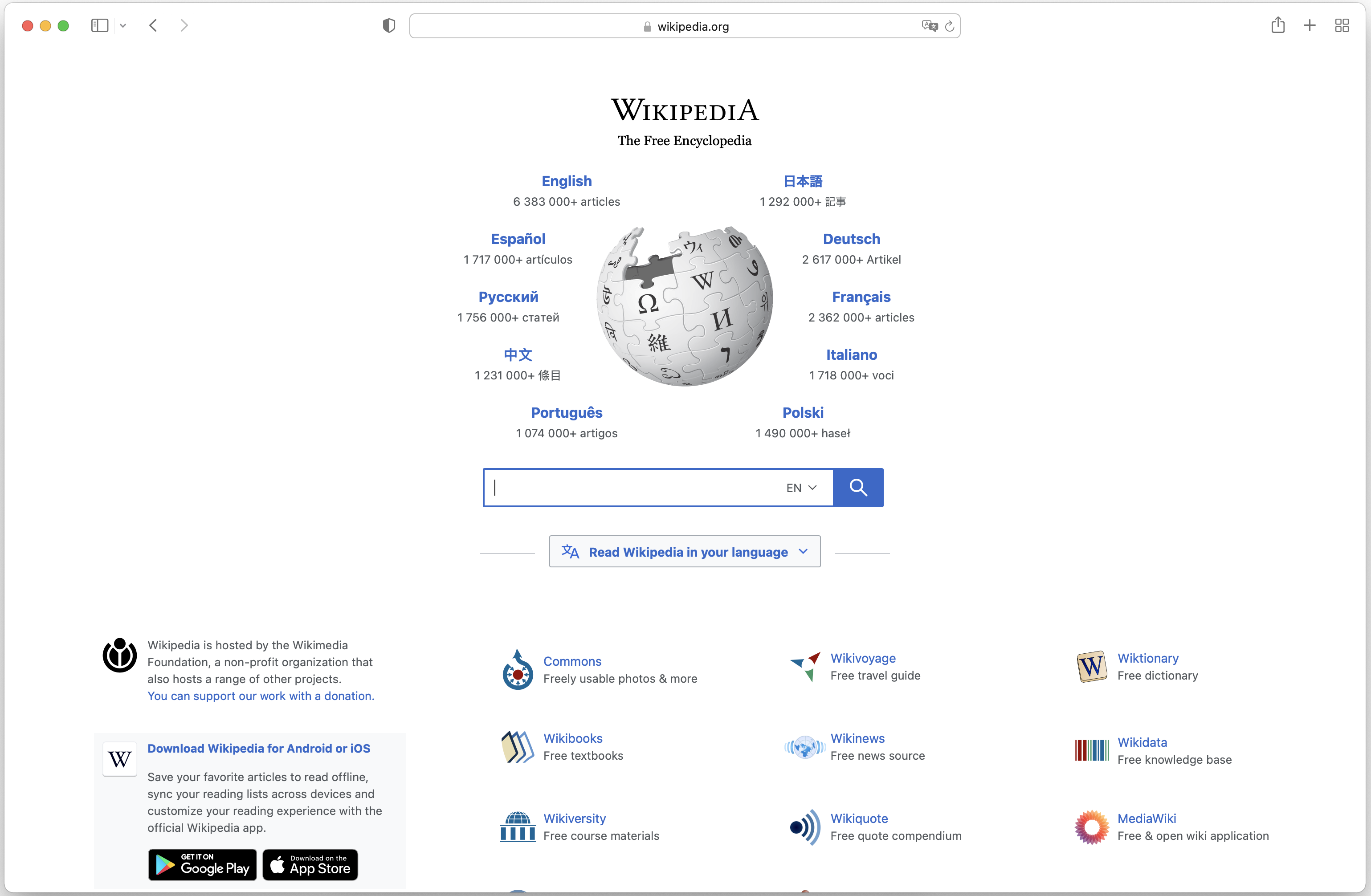|
Json2Ldap
Json2Ldap is a JSON-to-LDAP gateway software, written in Java and developed by Nimbus Directory Services. It provides a JSON-RPC 2.0 interface for web clients to access one or more LDAP v3 - compatible directories. The Json2Ldap web API supports the standard LDAP directory requests as well as several extended operations and controls. Background Json2Ldap was initially conceived as a lightweight JSON alternative to existing XML-based gateways for providing directory service access to web browsers. Its first official release was in May 2010. In May 2011 development of the software was passed to Nimbus Directory Services. Interface specification Json2Ldap provides a JSON web interface for establishing LDAP client connections to one or more directory servers. Client web interface: * Version 2.0 of the JSON-RPC protocol. * Requests are accepted over HTTP POST. * Optional support for Cross-Origin Resource Sharing (CORS) requests. Supported standard LDAP directory operations (as pe ... [...More Info...] [...Related Items...] OR: [Wikipedia] [Google] [Baidu] |
List Of LDAP Software
The following is a list of software programs that can communicate with and/or host directory services via the Lightweight Directory Access Protocol (LDAP). Client software Cross-platform * Admin4 - an open source LDAP browser and directory client for Linux, OS X, and Microsoft Windows, implemented in Python. * Apache Directory Server/Studio - an LDAP browser and directory client for Linux, OS X, and Microsoft Windows, and as a plug-in for the Eclipse development environment. * FusionDirectory, a web application under license GNU General Public License developed in PHP for managing LDAP directory and associated services. * JXplorer - a Java-based browser that runs in any operating environment. * JXWorkBench - a Java-based plugin to JXplorer that includes LDAP reporting using the JasperReports reporting engine. * LDAP Account Manager - a PHP based webfrontend for managing various account types in an LDAP directory. * phpLDAPadmin - a web-based LDAP administration tool for ... [...More Info...] [...Related Items...] OR: [Wikipedia] [Google] [Baidu] |
Cross-platform
In computing, cross-platform software (also called multi-platform software, platform-agnostic software, or platform-independent software) is computer software that is designed to work in several computing platforms. Some cross-platform software requires a separate build for each platform, but some can be directly run on any platform without special preparation, being written in an interpreted language or compiled to portable bytecode for which the interpreters or run-time packages are common or standard components of all supported platforms. For example, a cross-platform application may run on Microsoft Windows, Linux, and macOS. Cross-platform software may run on many platforms, or as few as two. Some frameworks for cross-platform development are Codename One, Kivy, Qt, Flutter, NativeScript, Xamarin, Phonegap, Ionic, and React Native. Platforms ''Platform'' can refer to the type of processor (CPU) or other hardware on which an operating system (OS) or applicatio ... [...More Info...] [...Related Items...] OR: [Wikipedia] [Google] [Baidu] |
Web Browser
A web browser is application software for accessing websites. When a user requests a web page from a particular website, the browser retrieves its files from a web server and then displays the page on the user's screen. Browsers are used on a range of devices, including desktops, laptops, tablets, and smartphones. In 2020, an estimated 4.9 billion people used a browser. The most used browser is Google Chrome, with a 65% global market share on all devices, followed by Safari with 18%. A web browser is not the same thing as a search engine, though the two are often confused. A search engine is a website that provides links to other websites. However, to connect to a website's server and display its web pages, a user must have a web browser installed. In some technical contexts, browsers are referred to as user agents. Function The purpose of a web browser is to fetch content from the World Wide Web or from local storage and display it on a user's device. This process b ... [...More Info...] [...Related Items...] OR: [Wikipedia] [Google] [Baidu] |
Servlet Container
A web container (also known as a servlet container; and compare "webcontainer" ) is the component of a web server that interacts with Jakarta Servlets. A web container is responsible for managing the lifecycle of servlets, mapping a URL to a particular servlet and ensuring that the URL requester has the correct access-rights. A web container handles requests to servlets, Jakarta Server Pages (JSP) files, and other types of files that include server-side code. The Web container creates servlet instances, loads and unloads servlets, creates and manages request and response objects, and performs other servlet-management tasks. A web container implements the web component contract of the Jakarta EE architecture. This architecture specifies a runtime environment for additional web components, including security, concurrency, lifecycle management, transaction, deployment, and other services. List of Servlet containers The following is a list of applications which implement the Jak ... [...More Info...] [...Related Items...] OR: [Wikipedia] [Google] [Baidu] |
Web Application Archive
In software engineering, a WAR file (Web Application Resource or Web application ARchive) is a file used to distribute a collection of JAR-files, JavaServer Pages, Java Servlets, Java classes, XML files, tag libraries, static web pages (HTML and related files) and other resources that together constitute a web application. Content and structure A WAR file may be digitally signed in the same way as a JAR file in order to allow others to determine where the source code came from. There are special files and directories within a WAR file: * The /WEB-INF directory in the WAR file contains a file named web.xml which defines the structure of the web application. If the web application is only serving JSP files, the web.xml file is not strictly necessary. If the web application uses servlets, then the servlet container uses web.xml to ascertain to which servlet a URL request will be routed. The web.xml file is also used to define context variables which can be referenced within the servl ... [...More Info...] [...Related Items...] OR: [Wikipedia] [Google] [Baidu] |
Simple Authentication And Security Layer
Simple Authentication and Security Layer (SASL) is a framework for authentication and data security in Internet protocols. It decouples authentication mechanisms from application protocols, in theory allowing any authentication mechanism supported by SASL to be used in any application protocol that uses SASL. Authentication mechanisms can also support ''proxy authorization'', a facility allowing one user to assume the identity of another. They can also provide a ''data security layer'' offering ''data integrity'' and ''data confidentiality'' services. DIGEST-MD5 provides an example of mechanisms which can provide a data-security layer. Application protocols that support SASL typically also support Transport Layer Security (TLS) to complement the services offered by SASL. John Gardiner Myers wrote the original SASL specification (RFC 2222) in 1997. In 2006, that document was replaced by RFC 4422 authored by Alexey Melnikov and Kurt D. Zeilenga. SASL, as defined by RFC 4422 is an ... [...More Info...] [...Related Items...] OR: [Wikipedia] [Google] [Baidu] |
Cross-Origin Resource Sharing
Cross-origin resource sharing (CORS) is a mechanism that allows restricted resources on a web page to be requested from another domain outside the domain from which the first resource was served. A web page may freely embed cross-origin images, stylesheets, scripts, iframes, and videos. Certain "cross-domain" requests, notably Ajax requests, are forbidden by default by the same-origin security policy. CORS defines a way in which a browser and server can interact to determine whether it is safe to allow the cross-origin request. It allows for more freedom and functionality than purely same-origin requests, but is more secure than simply allowing all cross-origin requests. The specification for CORS is included as part of the WHATWG's Fetch Living Standard. This specification describes how CORS is currently implemented in browsers. An earlier specification was published as a W3C Recommendation. Technical overview For Ajax and HTTP request methods that can modify data (usual ... [...More Info...] [...Related Items...] OR: [Wikipedia] [Google] [Baidu] |
HTTP
The Hypertext Transfer Protocol (HTTP) is an application layer protocol in the Internet protocol suite model for distributed, collaborative, hypermedia information systems. HTTP is the foundation of data communication for the World Wide Web, where hypertext documents include hyperlinks to other resources that the user can easily access, for example by a mouse click or by tapping the screen in a web browser. Development of HTTP was initiated by Tim Berners-Lee at CERN in 1989 and summarized in a simple document describing the behavior of a client and a server using the first HTTP protocol version that was named 0.9. That first version of HTTP protocol soon evolved into a more elaborated version that was the first draft toward a far future version 1.0. Development of early HTTP Requests for Comments (RFCs) started a few years later and it was a coordinated effort by the Internet Engineering Task Force (IETF) and the World Wide Web Consortium (W3C), with work later moving t ... [...More Info...] [...Related Items...] OR: [Wikipedia] [Google] [Baidu] |
Directory Server
In computing, a directory service or name service maps the names of network resources to their respective network addresses. It is a shared information infrastructure for locating, managing, administering and organizing everyday items and network resources, which can include volumes, folders, files, printers, users, groups, devices, telephone numbers and other objects. A directory service is a critical component of a network operating system. A directory server or name server is a server which provides such a service. Each resource on the network is considered an object by the directory server. Information about a particular resource is stored as a collection of attributes associated with that resource or object. A directory service defines a namespace for the network. The namespace is used to assign a ''name'' (unique identifier) to each of the objects. Directories typically have a set of rules determining how network resources are named and identified, which usually includes a req ... [...More Info...] [...Related Items...] OR: [Wikipedia] [Google] [Baidu] |
Directory Service
In computing, a directory service or name service maps the names of network resources to their respective network addresses. It is a shared information infrastructure for locating, managing, administering and organizing everyday items and network resources, which can include volumes, folders, files, printers, users, groups, devices, telephone numbers and other objects. A directory service is a critical component of a network operating system. A directory server or name server is a server which provides such a service. Each resource on the network is considered an object by the directory server. Information about a particular resource is stored as a collection of attributes associated with that resource or object. A directory service defines a namespace for the network. The namespace is used to assign a ''name'' (unique identifier) to each of the objects. Directories typically have a set of rules determining how network resources are named and identified, which usually include ... [...More Info...] [...Related Items...] OR: [Wikipedia] [Google] [Baidu] |
Java (software Platform)
Java is a set of computer software and specifications developed by James Gosling at Sun Microsystems, which was later acquired by the Oracle Corporation, that provides a system for developing application software and deploying it in a cross-platform computing environment. Java is used in a wide variety of computing platforms from embedded devices and mobile phones to enterprise servers and supercomputers. Java applets, which are less common than standalone Java applications, were commonly run in secure, sandboxed environments to provide many features of native applications through being embedded in HTML pages. Writing in the Java programming language is the primary way to produce code that will be deployed as byte code in a Java virtual machine (JVM); byte code compilers are also available for other languages, including Ada, JavaScript, Python, and Ruby. In addition, several languages have been designed to run natively on the JVM, including Clojure, Groovy, ... [...More Info...] [...Related Items...] OR: [Wikipedia] [Google] [Baidu] |

